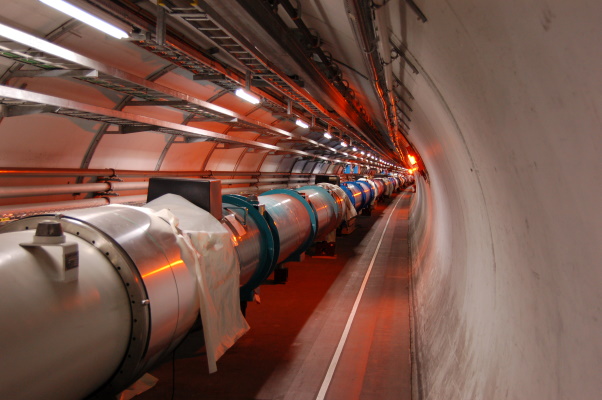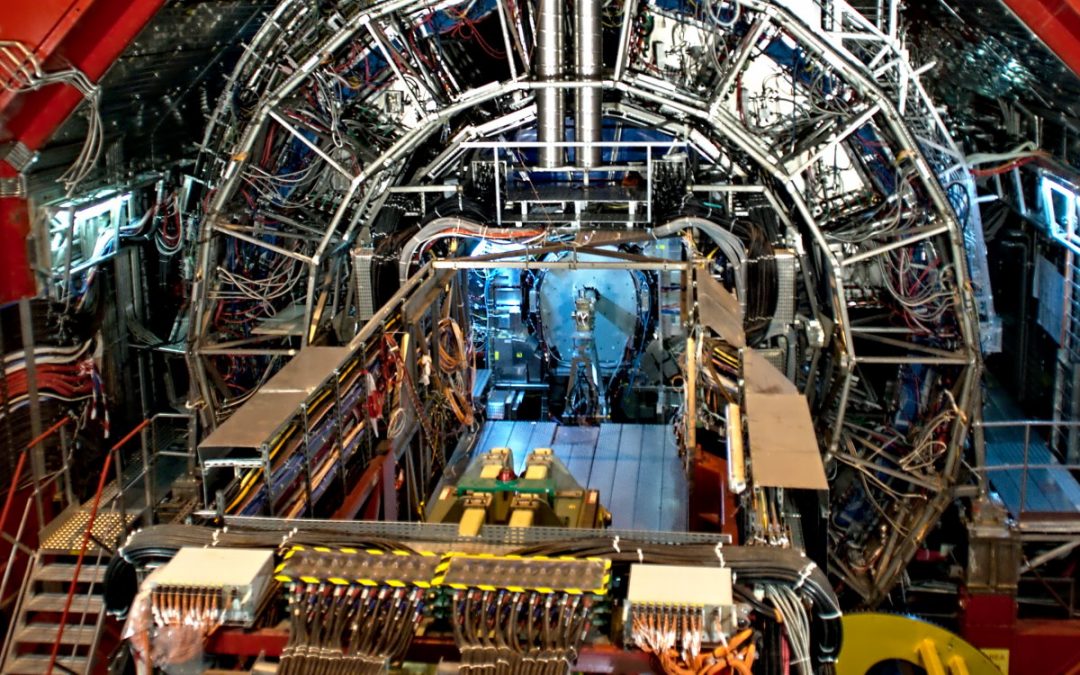The Large Hadron Collider has not discovered new fundamental particles since it detected the Higgs boson in 2012. Why? Are there deficiencies in the detectors, in the search strategies, in the accelerator itself? Or simply what is already known is all there is and that is all there is to work with? The Fondecyt project recently awarded to Giovanna Cottin, an academic at the Universidad Adolfo Ibáñez and a young researcher at our institute, seeks to answer these questions and propose strategies to discover predicted elementary particles and observe signs of a new physics that goes beyond the standard model.
By Jorge Román
Cover image: Alice experiment at the Large Hadron Collider. Credits: Frank Weber, CERN. Source: Flickr.com
The Large Hadron Collider (LHC) is the world's largest particle accelerator and the most complex machine ever created by man. With its 27-kilometer circumference, seven detectors (among them the AtlasAtlas, the CMS y Alice) and a maximum collision energy of 13 TeV (teraelectronvolts), the LHC has confirmed the existence of the Higgs boson (a fundamental particle theorized by the standard model) and detected almost 60 new particles called hadrons (although they are not fundamental particles), among many other discoveries.
But even the largest and most complex machine created by humans may be approaching its limits in solving the mysteries of subatomic physics. In fact, the last fundamental particle discovered was the aforementioned Higgs boson in 2012 (Charley, 2020), which has forced physics to work on other hypotheses and new search methods.
This is precisely what the Fondecyt project awarded by Giovanna Cottin, an academic at the Universidad Adolfo Ibáñez and a young researcher at our institute, is aiming at. Her project called "Searching for New Physics at the Lifetime Frontier", as she translates it, is the search for elementary particles predicted by theories that go beyond the standard model, particles with long half-lives, capable of traveling macroscopic distances inside the LHC detectors or other particle accelerators, which makes them generate very exotic signals.
"Search for new physics at the half-life frontier" is the title of the Fondecyt project awarded to Giovanna Cottin, an academic at the Universidad Adolfo Ibáñez and young researcher at the Saphir Millennium Institute. Its objective is to characterize the signals that could be emitted by theorized (but not yet discovered) elementary particles and, in this way, provide clues on how to search for them, either through existing particle accelerators and detectors, or through technologies under development.

As Cottin explains, "we have not yet seen new physics, so one can ask the question, why? According to her, there are several ways to answer this question: there may be a lack of energy to produce massive particles that have not been discovered; it may be that the detectors lack sufficient precision; or it may be that these particles have special properties that make their signals too exotic for what they are expected to detect. The latter is the hypothesis under which Cottin's project is framed: "I aim to characterize some of these signals to understand the extent to which models predicting these particles may or may not be plausible."
This project is part of frontier research at the international level: "The international community is super active in characterizing searches for new physics at this new frontier," says Cottin. His project focuses specifically on heavy neutral leptons, such as new heavy neutrinos with long half-lives. He is also interested in characterizing the extent to which the LHC can access unexplored parameter spaces in these models considering that these particles have half-lives.
The advantage of investigating at the half-life frontier, explains Cottin, is that the search for these new particles can be done by exploring the energy frontier or the intensity frontier. Why? Because the elementary particles proposed by these new models appear to be too heavy to be generated in working particle accelerators. So, to detect them, it would be necessary to build particle accelerators that reach energies close to 100 TeV (the LHC, at present, collides protons at 13 TeV).

In the photo: one of the tunnels where the Large Hadron Collider (LHC) is located. Although this mile-long particle accelerator has revolutionized physics, it has yet to provide clues to new physics that can explain the anomalies of the standard model. Detecting new elementary particles and new subatomic phenomena may require the construction of new experiments at the LHC, the use of other particle accelerators, or the construction of a kind of improved LHC, capable of reaching energies nine times higher than those attained by the LHC today. Image credits: Mike Procario. Source: Flickr.com.
However, there is another alternative: breaking the intensity frontier. Cottin explains that there are proposals for new linear colliders that focus not on reaching high energies, but on improving precision through data accumulation, generating a large number of collisions. This can be done in linear accelerators or in electron and positron colliders, without the need to reach energies higher than those of the LHC.
There are also proposals for new experiments that could be incorporated into the LHC itself. For example, the Mathusla project project or the Faserdetector, which would be on the surface, above the LHC ring, and would be able to detect long half-life particles that are produced in the LHC experiments and escape detection in the subway experiments.
What Cottin is looking for is to develop and implement - from a phenomenological point of view - strategies that allow us to search for these long half-life particles already predicted in solid theoretical models. "Why aren't we seeing the new physics?" asks Cottin. "Maybe there are intrinsic features of these new elementary particles that have not been studied as much [...] and that has experimental consequences, phenomenological consequences: understanding to what extent these particles can be produced." "There is still room to understand what predictions of new physics can be tested with the potential detection of long-lived particles at the LHC and other future experiments," concludes the researcher.
What is not known is whether the predicted elementary particles exist - but current experiments or strategies have not yet been able to detect them - or whether a chimera is simply being pursued. Either possibility is fascinating and opens new - and challenging - doors to the world of subatomic physics.

